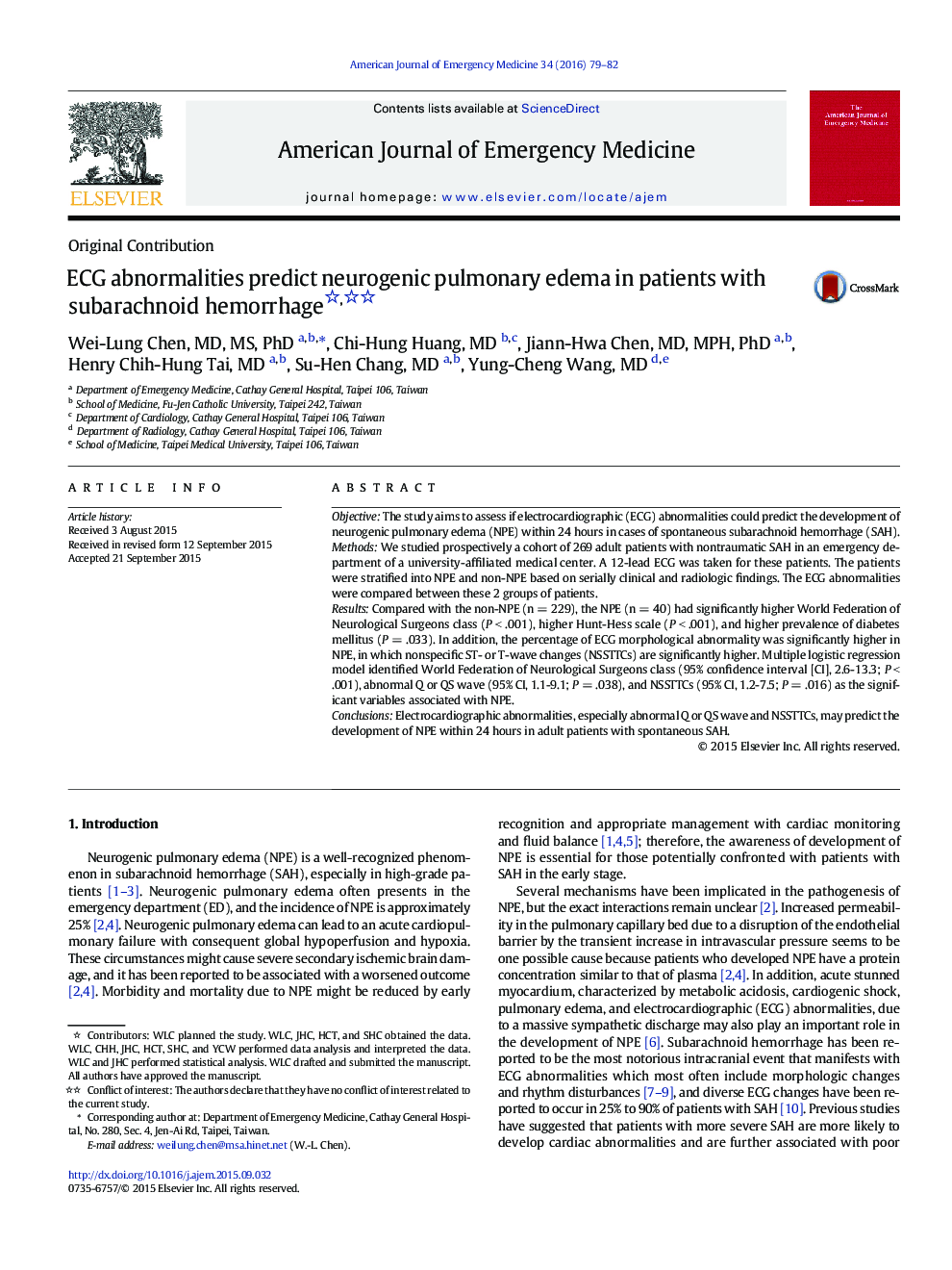| Article ID | Journal | Published Year | Pages | File Type |
|---|---|---|---|---|
| 3223423 | The American Journal of Emergency Medicine | 2016 | 4 Pages |
ObjectiveThe study aims to assess if electrocardiographic (ECG) abnormalities could predict the development of neurogenic pulmonary edema (NPE) within 24 hours in cases of spontaneous subarachnoid hemorrhage (SAH).MethodsWe studied prospectively a cohort of 269 adult patients with nontraumatic SAH in an emergency department of a university-affiliated medical center. A 12-lead ECG was taken for these patients. The patients were stratified into NPE and non-NPE based on serially clinical and radiologic findings. The ECG abnormalities were compared between these 2 groups of patients.ResultsCompared with the non-NPE (n = 229), the NPE (n = 40) had significantly higher World Federation of Neurological Surgeons class (P < .001), higher Hunt-Hess scale (P < .001), and higher prevalence of diabetes mellitus (P = .033). In addition, the percentage of ECG morphological abnormality was significantly higher in NPE, in which nonspecific ST- or T-wave changes (NSSTTCs) are significantly higher. Multiple logistic regression model identified World Federation of Neurological Surgeons class (95% confidence interval [CI], 2.6-13.3; P < .001), abnormal Q or QS wave (95% CI, 1.1-9.1; P = .038), and NSSTTCs (95% CI, 1.2-7.5; P = .016) as the significant variables associated with NPE.ConclusionsElectrocardiographic abnormalities, especially abnormal Q or QS wave and NSSTTCs, may predict the development of NPE within 24 hours in adult patients with spontaneous SAH.
